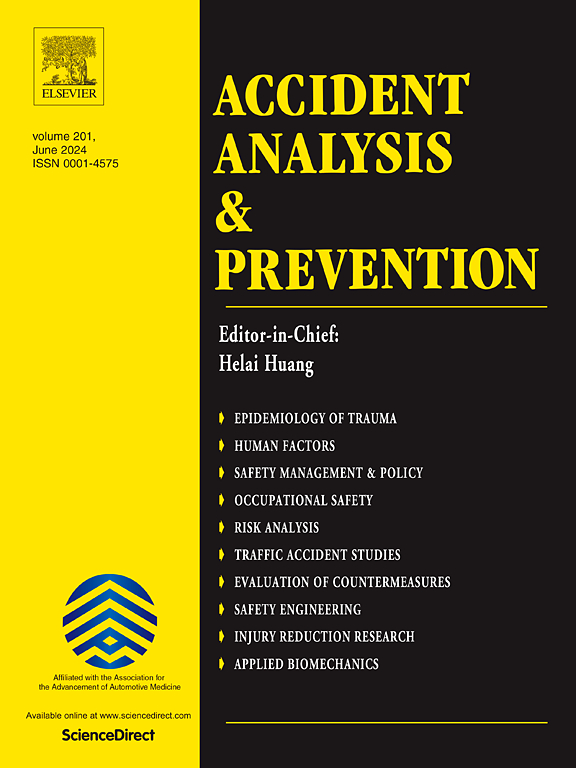A comparison of actual and perceived risk of apprehension for speeding in Norway
IF 5.7
1区 工程技术
Q1 ERGONOMICS
引用次数: 0
Abstract
This paper compares actual and perceived risk of apprehension for speeding in Norway. Actual risk of apprehension was estimated by relying on data on the number of citations for speeding and the percentage of vehicles speeding when passing automatic traffic counting stations. It was defined as the number of detected violations per million kilometres driven while committing a violation. Perceived risk of apprehension was estimated as a mean annual frequency of getting detected by the police, based on survey answers given by samples of drivers surveyed in 2010, 2014 and 2024. Actual risk of apprehension was converted into a mean annual frequency of detection by relying on estimates of the mean annual driving distance. Thus, perceived mean annual frequency of detection could be compared to actual mean annual frequency of detection. Drivers were found to overestimate the risk of apprehension considerably, but the size of the overestimation declined from 2010 to 2014 and further again to 2024. In 2024, mean perceived risk of apprehension was about 2.4 times higher than actual risk of apprehension. Drivers were also found to overestimate the number of speed cameras deployed in Norway. Only a small minority of drivers had a correct perception of how the risk of apprehension for speeding varied according to the level of speeding. The decisions drivers make about speeding are based on their perceived risk of apprehension; hence it is advantageous to compliance that drivers overestimate the risk of apprehension.
挪威超速实际风险与感知风险的比较。
本文比较了挪威超速行驶的实际逮捕风险和感知逮捕风险。实际抓捕风险是根据超速罚单的数量和通过自动交通计数站时超速车辆的百分比等数据估算出来的。它被定义为在超速行驶时每百万公里被发现的违规次数。根据 2010 年、2014 年和 2024 年接受调查的驾驶员样本给出的调查答案,估算出被警方查获的年平均频率。根据对年平均驾驶距离的估算,将实际被抓风险转换为年平均被抓频率。因此,可将感知的年平均侦测频率与实际的年平均侦测频率进行比较。结果发现,驾驶员大大高估了被发现的风险,但高估的程度从 2010 年到 2014 年有所下降,到 2024 年又进一步下降。到 2024 年,平均感知的危险性风险约为实际危险性风险的 2.4 倍。研究还发现,驾驶员高估了挪威部署的测速摄像头数量。只有少数驾驶员能够正确认识到超速行驶的风险随超速程度的不同而变化。驾驶员对超速做出的决定是基于他们对被逮捕风险的感知;因此,遵守驾驶员高估被逮捕风险的规定是有利的。
本文章由计算机程序翻译,如有差异,请以英文原文为准。
求助全文
约1分钟内获得全文
求助全文
来源期刊

Accident; analysis and prevention
Multiple-
CiteScore
11.90
自引率
16.90%
发文量
264
审稿时长
48 days
期刊介绍:
Accident Analysis & Prevention provides wide coverage of the general areas relating to accidental injury and damage, including the pre-injury and immediate post-injury phases. Published papers deal with medical, legal, economic, educational, behavioral, theoretical or empirical aspects of transportation accidents, as well as with accidents at other sites. Selected topics within the scope of the Journal may include: studies of human, environmental and vehicular factors influencing the occurrence, type and severity of accidents and injury; the design, implementation and evaluation of countermeasures; biomechanics of impact and human tolerance limits to injury; modelling and statistical analysis of accident data; policy, planning and decision-making in safety.
 求助内容:
求助内容: 应助结果提醒方式:
应助结果提醒方式:


